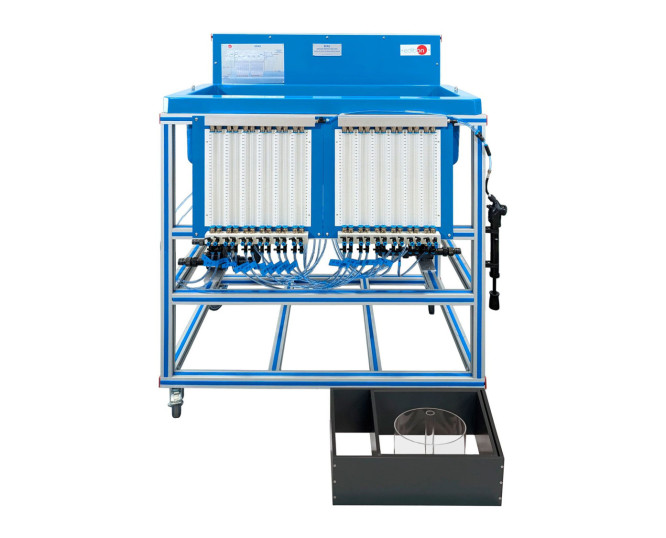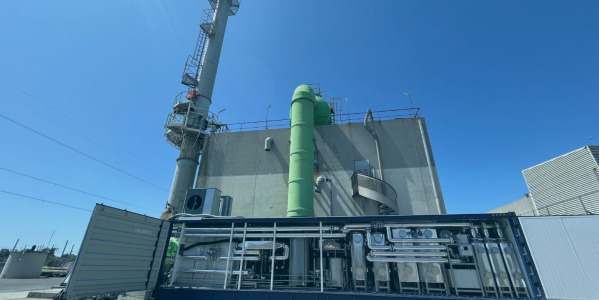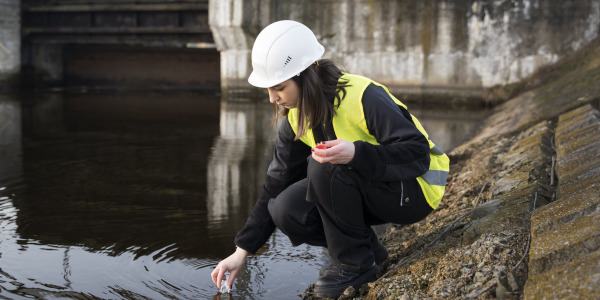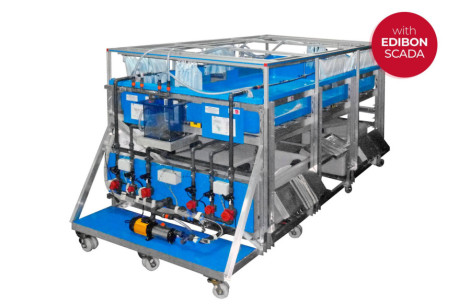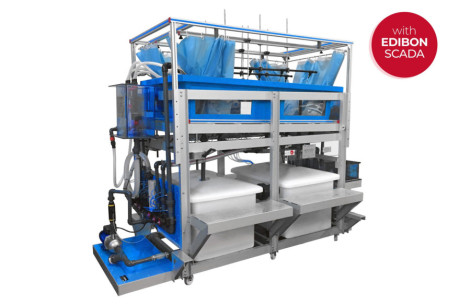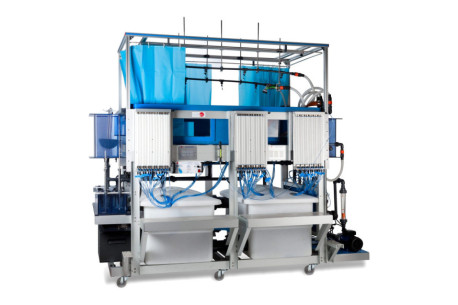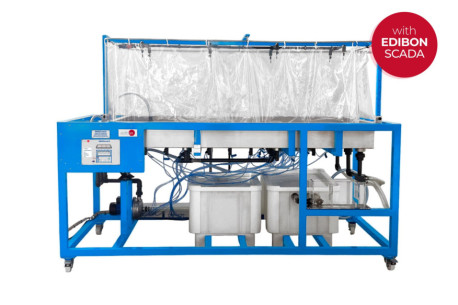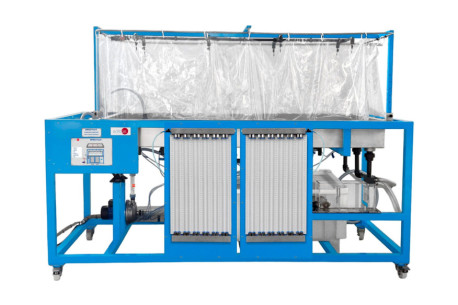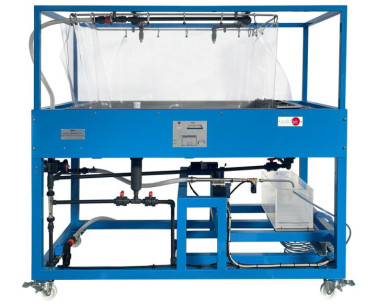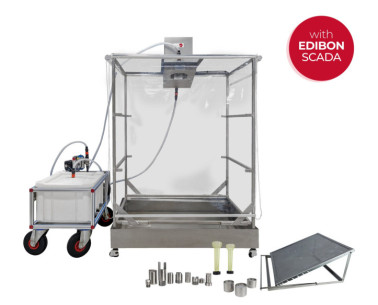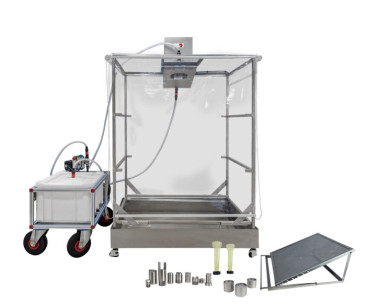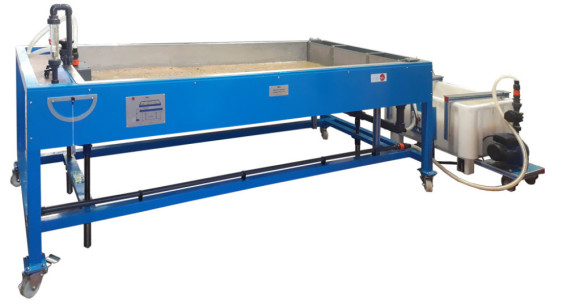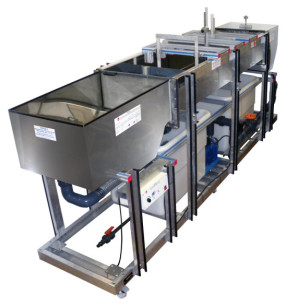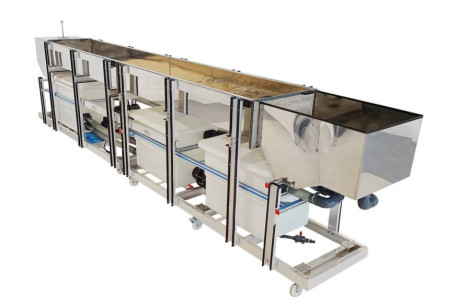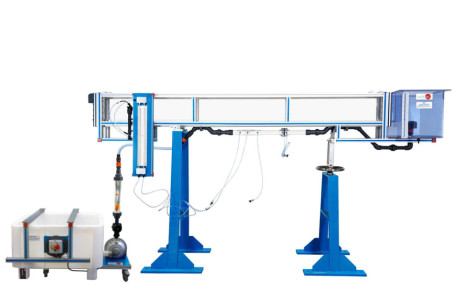EFAS 地表水流量设备
創新系統
The Ground Water Flow Unit, "EFAS", has been designed by EDIBON to demonstrate the hydrological principles of groundwater flow and the applications of these to different engineering constructions.
化验室
相關新聞
一般說明
The Ground Water Flow Unit, "EFAS", designed by EDIBON, is composed of a test tank that will be filled with fine grave or sand to construct to develop different models. The entry of water into the tank is done through two inlets, each of them located at each end. The flow of each water inlet is controlled by a membrane valve, which is easily accessible for the user. Inlets end inside the tank in a diffuser shape to affect the least possible the created model.
In the base of the test tank there are two wells simmetrically located. The wells outlets, located at the bottom part of the tank, have a membrane valve, that allows the regulation of the outletflows. Well have a spillway in their upper partto avoid floods.
The unit includes nineteen tappings in the base of the test tank, configured in cross shape . Pressure of the nineteen tappings can be seen in two manometers panels. The tappings have a sediments picking system to avoid them to reach the measuring elements. Under each tapping there is a plug which has to be removed regularly to extract the sand accumulated in it.
This unit is supplied with three accessories that make it easy the construction of the different models object of study:
- Model for a lake construction.
- Model for an excavation construction.
- Model for a confined aquifer construction.
In addition to the demonstrations and exercises proposed (see "Exercises and Practical Possibilities" section), instructors andstudents may contrutfurther model situations for study.
練習和指導練習
手册中包含的指导实践练习
- Suction cone in an absorption well.
- Interaction of cones of depression by two adjoining wells.
- Study of the depression cone for a well in a confined aquifer.
- De-watering of an excavation model under freatic level.
- Draining of or lake model.
与该单位进行更多实际操作
- Demonstration of hydraulic gradients in ground water flow, including the effect of permeability.
- Investigation of hydraulic gradients for different models built on the test tank.
- Determination of the ground water level between inlet and outlet.
- Demonstration of the Darcy’s law.
- Study of the cone of depression for a well in a free aquifer.
- Study of the cone of depression cone for two wells.
- Experiment to obtain hydraulic gradients for a model with two wells. Compare it with the result of only one well by the superposition method.
- De-watering of an excavation model using two wells.
- Interaction of cones of depression by two adjoining wells.
- Draw-down curves for one well and two wells systems.
- Comparison of different profiles, combinations.
- Filling of the manometric tubes.
配套设备
Computer Controlled Hydrologic Systems, Rain Simulator and Irrigation Systems Unit (2x1 m)
Hydrologic Systems, Rain Simulator and Irrigation Systems Unit (2x1 m)
Computer Controlled Hydrologic Studies Unit
Hydrologic Studies Unit
Rainfall Hydrographs Unit
土壤侵蚀研究用降雨模拟器,电脑控制(PC)
土壤侵蚀研究用降雨模拟器
河流流量模拟器
移动床和流量可视化单元 (工作区: 2000X610 mm)
移动床和流量可视化单元 (工作区: 4000X610 mm)
开放式沉积通道
質量

售後服務

 Cookies首选项
Cookies首选项

